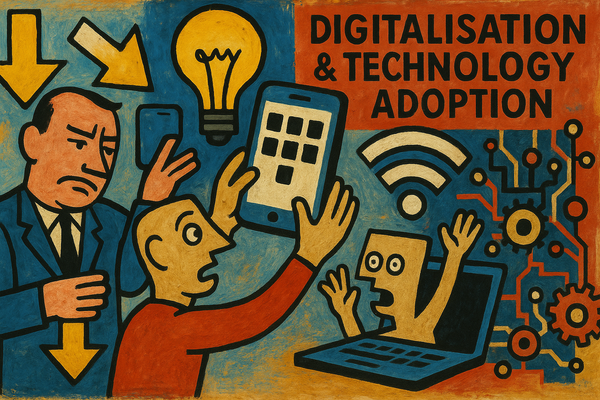The Rise of the Eco-Influencer: How Social Media is Driving Sustainable Travel
Sustainable tourism has transitioned from a niche trend to a central pillar of the modern travel industry. As concerns over climate change, environmental degradation, and cultural preservation grow, travellers are becoming increasingly discerning about their choices.

Sustainable tourism has transitioned from a niche trend to a central pillar of the modern travel industry. As concerns over climate change, environmental degradation, and cultural preservation grow, travellers are becoming increasingly discerning about their choices. They seek experiences that align with ethical and ecological values, yet many remain wary of corporate sustainability claims that may lack authenticity. In this landscape, social media influencers have emerged as powerful agents of change. Unlike traditional marketing, which often relies on generic promotional messaging, influencer marketing leverages the credibility of personal storytelling and peer recommendations to shape consumer behavior in profound ways. The ability of influencers to humanise sustainability efforts and demonstrate eco-friendly practices in an engaging and accessible manner has positioned them as key players in driving responsible tourism. This article explores the role of social media influencers in reshaping sustainable tourism, the characteristics that define effective eco-influencers, and the strategies that brands can deploy to cultivate impactful partnerships that extend beyond superficial marketing campaigns.
The Power of Social Media in Sustainable Travel
Social media has fundamentally altered the way travellers discover, evaluate, and engage with tourism brands. Platforms such as Instagram, TikTok, YouTube, and Twitter have become primary sources of inspiration, with visual storytelling playing a particularly influential role in how destinations and travel experiences are perceived. Studies indicate that over 80% of travellers rely on social media for trip planning, with sustainability-conscious tourists placing significant trust in content that highlights ethical and environmentally responsible travel practices.
Key factors driving social media’s influence on sustainable travel include:
- Authenticity and Trust: Consumers tend to trust influencers more than traditional advertising, as they see them as independent voices offering real experiences rather than corporate messaging. This credibility helps drive interest and engagement with sustainable tourism offerings.
- Visual Storytelling: Platforms such as Instagram and TikTok enable influencers to showcase sustainability in action. Whether through immersive videos, high-quality photography, or behind-the-scenes footage, visual storytelling makes sustainability relatable and aspirational.
- Peer Validation and Social Proof: Social media fosters a sense of community where travellers validate their choices through peer recommendations. User-generated content and influencer endorsements act as forms of social proof, encouraging others to adopt responsible travel behaviors.
- Community Engagement: Unlike traditional media, social platforms allow for two-way interaction, enabling consumers to ask questions, share their own experiences, and engage directly with brands and influencers. This participatory element strengthens trust and fosters an ongoing dialogue around sustainability.
Types of Eco-Influencers in Sustainable Tourism
Not all influencers operate in the same way, and their effectiveness depends on their level of engagement, audience reach, and expertise in sustainable travel. Several distinct categories of eco-influencers are shaping the tourism industry:
Micro-Influencers (10k–50k followers)
Micro-influencers are individuals who have a smaller but highly engaged audience. Their followers tend to trust their recommendations more than those of macro-influencers, as their content is perceived as more personal and less commercialized. Micro-influencers often focus on niche topics such as zero-waste travel, conservation efforts, or ethical tourism. Their content is particularly effective in encouraging behavioural change, as their audiences see them as relatable and authentic advocates.
Macro-Influencers (100k+ followers)
Macro-influencers possess a significantly larger audience and can provide substantial exposure for sustainable tourism brands. While their reach is broader, engagement levels may be lower, and their endorsements can sometimes be viewed as less authentic due to frequent sponsorships. However, when macro-influencers have a strong personal commitment to sustainability, they can effectively amplify eco-conscious travel trends and introduce sustainable tourism options to a wider audience.
Activists and Sustainability Advocates
Unlike traditional travel influencers, sustainability advocates and activists dedicate their platforms to addressing pressing environmental and ethical concerns. Their credibility is rooted in their commitment to issues such as conservation, ethical tourism, and responsible travel policies. These influencers often collaborate with NGOs, environmental organisations, and ethical tourism initiatives to drive awareness and promote tangible action within the industry.
Experience-Driven Adventure Influencers
Adventure influencers who focus on immersive and eco-conscious travel experiences play a crucial role in making sustainability aspirational rather than restrictive. Their content often includes trekking in protected reserves, exploring carbon-neutral travel options, and engaging with local communities in ethical tourism initiatives. By showcasing the excitement and uniqueness of sustainable travel, they encourage their audiences to prioritise responsible tourism without feeling as though they are compromising on adventure or quality.
The Mechanisms Through Which Influencers Drive Change
Eco-influencers contribute to the advancement of sustainable tourism in several key ways. First, they serve as educators, breaking down complex environmental issues into digestible content that raises awareness among mainstream audiences. Whether explaining the impact of over-tourism, promoting eco-certifications, or advocating for ethical wildlife interactions, influencers simplify sustainability narratives in ways that resonate with their followers. Second, they act as brand amplifiers, helping responsible tourism businesses gain visibility in an increasingly crowded market. A well-placed endorsement from an influencer can significantly elevate the profile of an eco-friendly lodge, carbon-neutral tour operator, or sustainable travel gear company. Third, they shape consumer behavior by normalizing sustainable travel habits. Research suggests that individuals are more likely to adopt eco-friendly practices when they see others doing the same, and influencers function as role models in this regard, demonstrating the feasibility and desirability of responsible travel choices. Finally, influencers have the power to drive bookings and mobilize their communities to support sustainability initiatives. By integrating calls to action into their content, such as encouraging donations to conservation projects or promoting ethical volunteering opportunities, they extend their influence beyond consumer transactions and into broader advocacy efforts.
Strategies for Sustainable Tourism Brands in Influencer Partnerships
For tourism brands seeking to enhance their sustainability initiatives through influencer marketing, strategic alignment is essential. A key consideration is the selection of influencers who genuinely embody eco-conscious values rather than those who merely use sustainability as a marketing hook. Brands must prioritize partnerships with individuals who have demonstrated long-term commitment to responsible travel and who maintain audience trust through authentic storytelling. Another crucial strategy is the integration of user-generated content and community engagement efforts. Encouraging travelers to share their own eco-friendly experiences via branded hashtags and social media challenges can significantly expand the reach and credibility of a brand’s sustainability messaging. Interactive and educational content is another powerful tool, as collaborations that feature live Q&A sessions, behind-the-scenes sustainability insights, or immersive storytelling experiences help deepen audience engagement and reinforce transparency. Equally important is the cultivation of long-term influencer relationships rather than one-off promotional campaigns. Tourism brands that invest in sustained partnerships with eco-influencers foster stronger advocacy and build lasting consumer trust.
Additionally, brands must establish clear metrics for assessing the effectiveness of influencer collaborations, tracking key performance indicators such as engagement rates, brand mentions, website traffic, and conversion metrics tied to influencer-generated content. These insights allow for data-driven adjustments to marketing strategies, ensuring that influencer partnerships deliver tangible impact rather than superficial visibility.
The growing prominence of eco-influencers signals a fundamental shift in the sustainable tourism landscape. As digital audiences demand greater transparency and authenticity from travel brands, influencers have emerged as crucial intermediaries, bridging the gap between responsible tourism offerings and ethically conscious travellers. Their ability to humanize sustainability efforts, normalize eco-friendly behaviors, and drive direct consumer engagement makes them indispensable to the future of the travel industry. For tourism brands committed to sustainability, influencer collaborations represent an opportunity to enhance credibility, expand audience reach, and reinforce the industry’s broader commitment to environmental and social responsibility. However, the success of these partnerships hinges on strategic alignment, long-term engagement, and a commitment to authenticity. As sustainability continues to shape the evolution of travel, the role of influencers in advancing responsible tourism practices will only grow in significance, underscoring the need for brands to integrate influencer marketing into their broader sustainability strategies in a way that is both meaningful and measurable.




